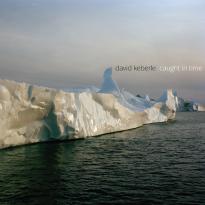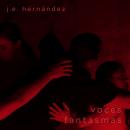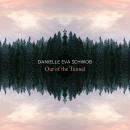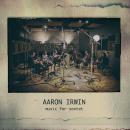Caught in Time
Caught in Time
Pittsburgh, PA
| David Keberle: Caught in TimeiTunes Album Page | |||
|---|---|---|---|
| Song Title | Time | Price | |
| 1. | Soundings II | 08:31 | $0.99 |
| 2. | Four to Go: I. Intro | 02:21 | $0.99 |
| 3. | Four to Go: II. Steady Like a Watch | 02:21 | $0.99 |
| 4. | Four to Go: III. Caught in Time | 03:48 | $0.99 |
| 5. | Four to Go: IV. Relentlessly Yet Always Rockin' | 02:47 | $0.99 |
| 6. | Percorsi d'anima | 09:29 | $0.99 |
| 7. | Incroci | 14:46 | |
| 8. | Quattro chiacchiere ed un aperitivo | 10:23 | |
| 9. | 3 Songs On the Poetry of Yeats: I. Those Images | 04:00 | $0.99 |
| 10. | 3 Songs On the Poetry of Yeats: II. The Lover Tells of the Rose in His Heart | 05:29 | $0.99 |
| 11. | 3 Songs On the Poetry of Yeats: III. The Ragged Wood | 03:40 | $0.99 |
In the instant a shutter snaps, a moment in time is frozen. Capture enough of these moments and you can watch the slow progression of a landscape, an iceberg, a glacier. In much the same way, a recording of a work preserves it—laid end to end to form an album, the recordings become a time-lapse procession of an evolving compositional style. Caught in Time represents just such an evolution, capturing moments in clarinetist/composer David Keberle’s work from 1997 to 2007 upon his return from seventeen years in Rome. These six eloquent and colorful chamber works were all premiered in either Pittsburgh or New York City and feature well known artists and ensembles of the day including Helen Tara O’ Connor (flute), the Pittsburgh Flute Club Flute Choir, Trio Johannes, Daniel Meyer (conductor), Robert Frankenberry (tenor), Eric Moe (piano), and Keberle himself.
Although classically schooled, David Keberle’s musical background also shows a deep understanding of today’s contemporary music and performance techniques. After he journeyed to Italy as a Fulbright scholar in 1979, Keberle elected to stay, working for almost two decades as a freelance composer and clarinetist specializing in new music. While there, he also helped found the ElectraVox Ensemble, a live electronics performance group. After his return to the U.S. he composed “Soundings,” a series of pedagogical compositions utilizing extended techniques for soloists and student ensembles that have been premiered by numerous illustrious soloists.
As a clarinetist, Keberle has performed in concerts and music festivals in North America, South America, China, Europe and the Middle East. He has also participated in recording sessions at IRCAM in Paris and the Italian National Radio (RAI) in both Rome and Naples.
NEW MUSIC BOX
“Keberle revels in many details of performance technique that lend his work a haunting, organic, and particular quality, yet he is above all a composer who paints with broad brushstrokes. The works featured on this release all have an unhurried, larger-than-life, at times epic quality; this is music driven by powerful seismic forces lurking under the surface, music about events that resound with a global sense of scope and impact. … David Keberle is also a clarinetist specializing in new music [and] Keberle’s performance reveals his secure technique and imaginative sense of tone color—many of his microtonal fingerings alter the instrument’s tone even more than they alter pitch, and in Keberle’s musical universe it’s clear that pitch and tone color are interrelated at an almost organic level. One of Keberle’s great strengths as a composer is his understanding of how several seemingly disparate elements may be combined to create impressions of singular expressive power. ... [R]arely have I been so taken by a composer’s use of time as aural and expressive space.” [FULL ARTICLE]
—Dan Visconti
CLASSICAL-MODERN MUSIC REVIEW
"David Keberle [is a] composer of music of brightness, beauty, contemporary in tone color, often lyrical in affect … "Soundings II" for Solo Flute & Flute Ensemble has a ravishing sonance and starts the program off auspiciously. The solo flute part is rangy with the skips, dynamics and timbre advances of the avant garde and the flute ensemble makes use of out-of-time cascades and other ultra-modern effects, yet the music is lyrically tonal. This is what the album is about--the presentation of pointilistic and colorful aural sonorities with the warmth of tonal expression … Caught in Time makes clear that David Keberle is a composer of the upper tier, fashioning excellently crafted, memorable chamber music for today." [FULL ARTICLE]
—Greg Edwards
KATHODIK
“In the six chamber works presented, what one appreciates most is the concentrated expression, the parsimony with which Keberle distributes notes, builds sonorous bridges between one phrase and the next giving them an inescapable presence. Almost never yielding to a tumultuous uproar, the enveloping atmospheres are at times suspended, at times shifting, surrounded by genuinely lyrical melodies, which are enlivened by rhythmic passages exuding roots in popular music imaginatively rewritten by the composer according to the precise moment and his own sensibility. A lyrical-poetic vein emerges, especially in those works that bear an Italian title, - Keberle is tied to our country after a long apprenticeship and intense musical and personal visits here. In the imaginative, Quattro chiacchiere ed un appetitivo (Four chats and an aperitif) one specifically detects a slight irony, which re-crystalizes the abstractness of certain passages and seems to evoke, in the manner of the early quartets of Elliot Carter, people who converse…” **** [FULL ARTICLE]
—Filippo Focosi
“The United States composer has a profound understanding of the modern musical language and moves with ease between styles, succeeding in a convincing manner to fuse memories of the recent past, with the acquisitions of the avant garde and influences on the highest levels from the school of jazz.” — La Stampa (Turin, Italy)
MONSIEUR DELIRE
"David Keberle’s chamber music shows a lot of humour and sensitivity, along with a rich expressive palette. 'Soundings II' uses various extended techniques to paint impressionistic soundscapes: simple, efficient, very elegant. 'Four to Go' shows a lot of acumen and wittiness in the course of its four miniatures." [FULL ARTICLE]
—Francois Couture



